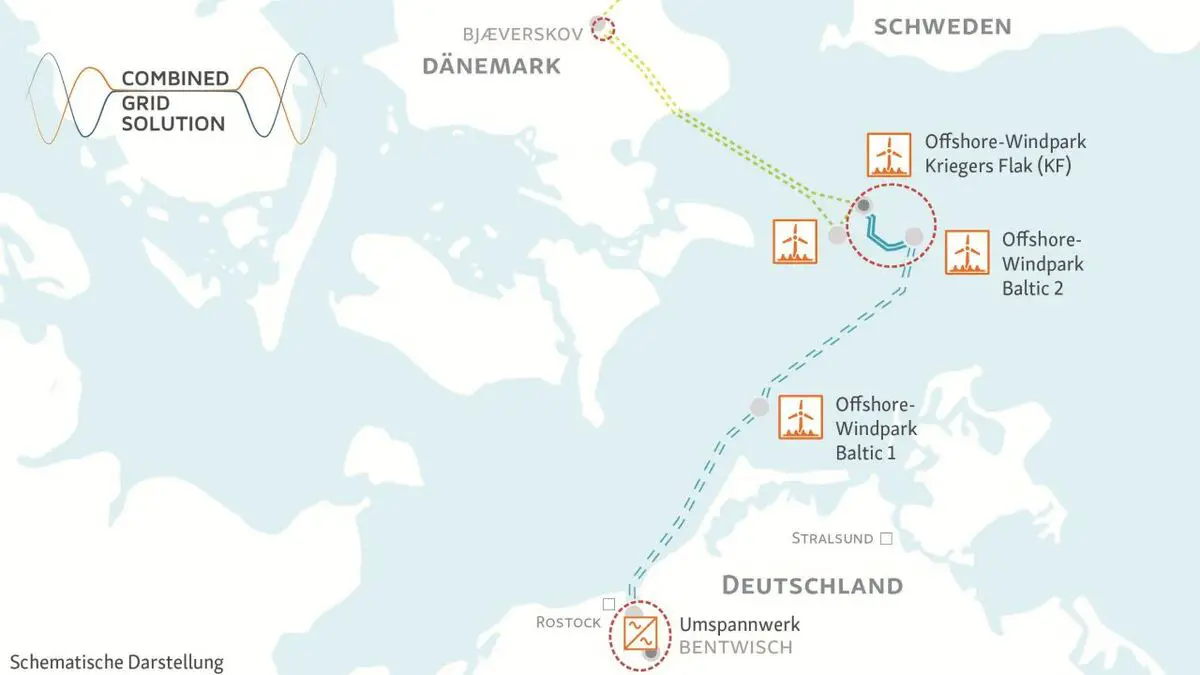The world’s first hybrid subsea interconnector has been inaugurated this week, integrating two German and Danish offshore wind farms in the Baltic Sea with the other, and allowing power to be brought onshore to Denmark or Germany and for cross-border energy trading. The Combined Grid Solution (CGS) was inaugurated by German transmission operator 50Hertz and Danish system operator Energinet, it can transmit power to Denmark or Germany and can also be used for cross-border energy trading.
Also Read: Construction of the world’s longest tunnel, Fehmarnbelt Tunnel, begins.
Two 25-km submarine cables, each with a capacity of 200 MW, are laid between the Baltic 2 and Kriegers Flak offshore substations, bringing both grid connection systems together. The US$354 million CGS creates a cross-border link between both Germany and Denmark, as well as interconnecting Denmark’s under-construction 605MW Kriegers Flak offshore wind farm with two completed German offshore wind farms located in the Baltic Sea – the 48.3MW Baltic 1 and the 288MW Baltic 2. The onshore grid connections for all three offshore wind farms; the onshore infrastructure which brings ashore the power generated by the offshore wind farm and integrates it into the national grid which also serves as interconnectors all of which serves to represent the first electric connection between two countries, which not only transports offshore wind power to land between those two countries but also allows for energy trading.
It offers both countries several effective options to balance the frequency and voltage of our transmission grids at all times, to deal with the integration of renewable energy sources with more flexibility, and to increase the stability of the overall system. Therefore, the Combined Grid Solution is an essential puzzle piece of our strategy to cover 100 percent of the electricity demand in our grid area, over the course of a year, with renewable energy by 2032. In addition, the project shows the high significance of the European Baltic area for the energy sector.
